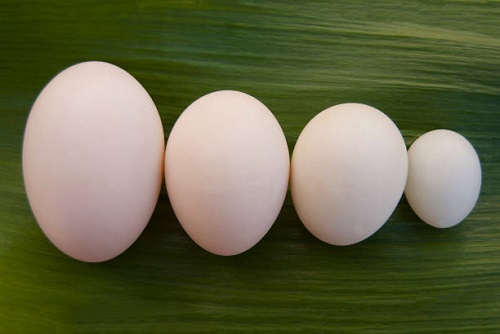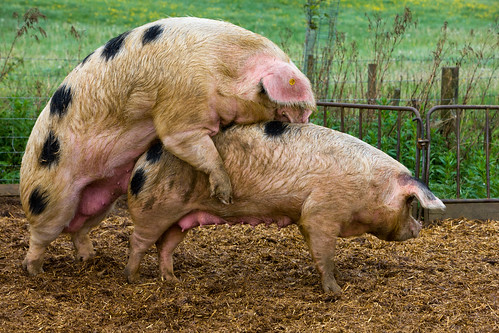The battery cage system is the most popular housing system for commercial laying hens. This system simply involves the use of iron, steel or wooden cages arranged or joined together like small batteries arranged in series, hence the name “battery cage”.
While deep-litter and battery cage systems have general and individual advantages or benefits, battery cage has far more advantages than deep-litter and free-range systems. Even though there are debates on the inhumanity of battery cages for animals, it is still the best for commercial table eggs farms. Other animals that can be kept and raised in battery cages include rabbits, broilers, quails and cane rats.
If you intend to raise your birds in battery cages, the advantages or benefits of battery cages are as follows:
1. Low health issues and disease transmissions
Birds raised inside cages don’t fall ill or contact disease easily like their counterparts raised on the deep-litter floor. Diseases are mostly transmitted from one animal to another through fecal ingestion. For instance, if a healthy chicken eats feed or water contaminated with the feces of a diseased bird, such a chicken could become infected and get sick. Contaminations of feed and water by droppings or feces are common in deep-litter rearing houses. Unfortunately, the birds would ingest the contaminated feed or water and become sick.
In the battery cage system, feed and water contamination is hard. The fecal droppings of the birds pass through the holes under the cages to the pit beneath. Hence, there is no way for the birds to have access to their feces. So the farmer would record a low incidence of diseases. This does not mean that the chickens can’t get sick. Some disease pathogens are transferred via wind, wild birds, rodents and clothing. This is why biosecurity measures and vaccination are important.
2. Improves feed conversion and egg production
Birds confined in cages often exhibit better feed conversion ratios (FCR). It is widely believed that since the birds have very limited or no space to walk about and perform other energy-draining activities, the energies are channeled to other things which include fat, meat and egg production. This is why the growth performance and egg production under the cage system are higher than those of the deep-litter system. However, the birds raised in a cage mostly suffer cage layer fatigue, prolapse and fatty liver diseases.
3. Serving feed and water is easy
The provisioning of feed and water to birds in cages is easier and faster especially when the task is automated with the use of automatic feeding and drinking system. You can easily serve feed to the birds through the feed troughs usually positioned at the front of the cage without being bombarded by hungry, impatient birds. This usually happens when feed is being served to birds in a deep-litter house. Sometimes, the birds stampede and may pile up on top of each other while serving them feed. Some get injured or die due to suffocation. The attendant can mistakenly step on a bird while trying to serve feed and water.
4. Low cost of labor
The number of personnel required to manage birds kept in a battery cage house is lower than those of a deep-litter house. Other occasional operations such as debeaking and intramuscular and subcutaneous vaccinations are easier and faster. They don’t require a lot of people.
If you’re using automated feeding and drinking systems, the labor required would be very less. Perhaps, just a supervisor or egg picker is required. Besides, we now have machines that automatically move the eggs from the pen to the collection room.
5. Low wastage of feed, water or eggs
You can easily prevent the wastage of feed and water in a cage. The trough is located where the claws of the chickens can’t reach. Water spillage on feed hardly occurs because both the drinker and feed trough are not close to each other. Fecal contamination seldom occurs.
The number of cracked eggs recorded in the battery cage management system is very low. Egg eating by the chickens is also rare because they have no access to the eggs laid by them. Egg cracks occur mostly due to mechanical and human errors. Sometimes, calcium deficiency or diseases could result in the laying of weak or soft-shelled eggs.
6. Accommodates more birds per space
Battery cages can accommodate more birds in a limited space. For instance, if a house can accommodate 1000 birds on the floor, it could accommodate as low as 1500 birds if battery cages are used.
This means the poultry farmer can save costs on infrastructure and maximize the use of the limited space available. There are different cage designs a poultry farmer can use from. There are the A-Shape and H-Shape cages. There are 2, 3, 4, 5 and 6-Tier cages. All these cages have their individual holding capacity. A cage unit could accommodate 80-250 birds depending on the cage design or build.
7. Durable and suitable for all breeds of chickens
There are galvanized iron or steel cages with long lifespans of 10-15 years depending on the production material. They are galvanized to prevent rapid rusting and this makes them last for a longer time.
A battery cage can be used for all breeds or classes of chickens. You can breed or keep broilers, cockerels, quails and layers inside battery cages without any negative productivity consequences. Production performances can be sustained and maximized with the use of battery cages.
8. High-quality poultry products
Rearing conditions always have an effect on chickens and their end-product quality. These conditions include airflow, sunshine and temperature. With battery cages, these conditions can be rightly conditioned to facilitate rapid growth of your birds and less exposure to disease pathogens.
Battery cages make automated feeding and drinking systems possible. Birds can be provided with clean, fresh water through nipple drinkers, thus preventing contamination and wastage of water. Clean eggs can be collected at any time with less incidence of egg cracks or egg eating. A farmer that incorporates battery cages into his farm under proper management should be getting more profits.


